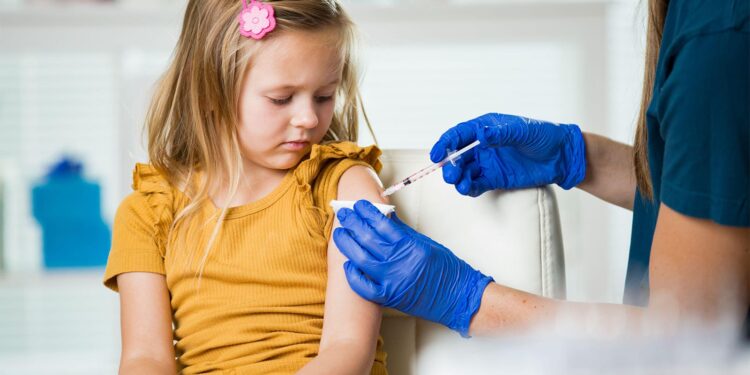[ad_1]
President Trump has said that Robert F. Kennedy Jr., his nominee to run HHS, would investigate why autism spectrum disorder (ASD) diagnoses are rising.
Since at least 2014, Trump has floated a theory that vaccines are behind the rise, but no evidence indicates this is true.
“There have been extensive studies researching potential links to routine childhood vaccinations and autism diagnoses, and the results have shown that no such link exists,” said Eric Burnett, MD, of Columbia University Irving Medical Center in New York City.
“The rise in autism diagnoses is largely due to greater awareness, better diagnosis, and broader diagnostic criteria,” Burnett told MedPage Today. “Correlation does not imply causation; just because two trends occur together doesn’t mean one caused the other.”
Do More People Have Autism?
In the past two decades, ASD diagnoses among children in the U.S. have jumped fourfold, according to CDC data. The agency’s Autism and Developmental Disabilities Monitoring network, which tracks the number and characteristics of children with ASD in 11 communities, showed that prevalence from 2000 to 2020 climbed from 6.7 to 27.6 cases per 1,000.
This means an estimated 2.8% of 8-year-old children were identified with autism in 2020, the CDC said. A recent analysis of medical records suggested that ASD diagnoses also rose substantially in young adults from 2011 through 2022.
There’s no single cause of autism, but several factors may have fueled the rising prevalence numbers, said Alison Singer, president of the Autism Science Foundation, a non-profit group that funds autism research.
“The first is that the definition of autism changed in 2013 when we went from DSM-IV to DSM-V,” Singer said. “The five subtypes of autism in DSM-IV, which included classic autism and Asperger’s syndrome, collapsed into one overly broad category of autism spectrum disorder.” That led to higher-functioning individuals being diagnosed with autism, she observed.
Better awareness and ascertainment accounted for a portion of the increase in prevalence, she said. Societal changes came into play, too.
“Parents are having children later in life and we know that higher maternal and paternal age leads to higher rates of autism,” Singer noted. Infants born prematurely are more likely to survive now, and those children are more likely to be diagnosed with ASD and developmental delays.
Why Are We Screening More?
Screening and surveillance for ASD have increased over the years, said Susan Hyman, MD, of the University of Rochester Medical Center in New York, who co-authored the most recent American Academy of Pediatrics (AAP) report on identifying and managing ASD.
The imperative to screen for ASD was recognized by parents and groups like the AAP when research showed that early intervention could improve functional skills in several developmental domains. “If improved functional outcomes were possible, identifying children who might benefit from them became an important movement,” Hyman told MedPage Today.
Screening is now done during well-child visits in most primary care pediatric practices when children are ages 18 months and 24 months, Hyman noted. There’s also been “a catch-up in diagnoses” among medically underserved populations, she pointed out.
“While there continues to be inequity in services provided, gains have been made in recognizing the diagnosis,” she said. “Increased rates of diagnosis among females, older youth and adults, and underserved populations have all contributed to the reported increase in prevalence of diagnosis.”
Why Were Vaccines Blamed?
In 1998, Andrew Wakefield, MBBS, formerly of the Royal Free Hospital and School of Medicine in London, published a now-retracted paper in The Lancet stating that 12 children had intestinal abnormalities after receiving the measles, mumps, and rubella (MMR) vaccination. In eight of the 12 children, parents associated the vaccine with the onset of behavioral symptoms.
Wakefield and co-authors hypothesized that intestinal inflammation after the MMR vaccine released gut proteins eventually migrated to the brain, causing damage that was reflected in autism symptoms.
“The Wakefield study was flawed because nothing was studied,” said Paul Offit, MD, of Children’s Hospital of Philadelphia.
“It was merely a report of eight children who had developed signs and symptoms of autism within a month of receiving the MMR vaccine. There was not a control group,” he emphasized. “Therefore, there was no way of knowing whether autism was occurring at a level greater than would be expected by chance alone.”
An investigative reporter later demonstrated that “Wakefield had misrepresented both clinical and biological data, causing the journal to withdraw the paper,” Offit told MedPage Today.
According to the Times of London, Wakefield was accused of altering the clinical findings for eight of 12 children in the study. Five of the eight children reportedly had psychosocial problems before they received the vaccine, though the paper described them as developmentally normal. Hospital pathology reports showed no findings of intestinal inflammation in the children. Only one child allegedly had new-onset behavioral symptoms days after receiving the vaccine.
In January 2010, the U.K. General Medical Council ruled that Wakefield acted dishonestly and irresponsibly. Several days later, The Lancet retracted his paper.
What Have Other Studies Shown?
In 1999, another group of London-based researchers reported in The Lancet there was no epidemiological evidence for a causal association between autism and the MMR vaccine. That conclusion was played out repeatedly in studies published in subsequent years.
One of the largest was a retrospective analysis of more than 537,000 children in Denmark published in the New England Journal of Medicine, which showed the risk of autism diagnoses was similar whether a child had the MMR vaccine or not. In the U.S., a study published in JAMA showed no harmful association between the MMR vaccine and autism, even in children at high risk for ASD. “These were studies that were well done, with appropriate controls,” Offit said.
Other hypotheses linking autism and vaccines that have been debunked centered around thimerosal, a preservative containing low levels of ethylmercury used in some multidose vials of vaccines, and arguments claiming that administering multiple vaccines at once may weaken the immune system. (All vaccines routinely recommended in the U.S. for children ages 6 years and younger are available in formulations that do not contain thimerosal.)
Yet, what causes autism remains unknown. There’s been rapid progress in translational research integrating genetics, neurobiology, and clinical presentation, and that needs to continue, Hyman stressed.
“It is possible that environmental factors — other than vaccines, which have extensive data indicating they are not responsible — may interact with genetic predisposition to increase an individual’s risk for autism,” she said.
[ad_2]
Source link : https://www.medpagetoday.com/neurology/autism/113925
Author :
Publish date : 2025-01-24 18:24:46
Copyright for syndicated content belongs to the linked Source.














